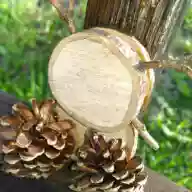Sing and dance along to popular songs! Recommended hits from kids’ TV shows.
Songs from children’s shows are some of the best entertainment to enjoy with kids!
Here, we’ll introduce popular songs from kids’ programs.
From timeless classics to new hits, you’ll find lots of beloved characters and colorful animations that children adore.
Try dancing along and copying the choreography.
It’s also fun to create your own original dance.
Find your favorite songs and enjoy a wonderful world of music together with the kids!
- Get pumped with popular songs from “Okaasan to Issho”! A collection of timeless tunes everyone will want to sing together
- I want to sing it at the senior class recital! A choral piece that 5-year-olds can sing with all their heart
- Choral songs that captivate 4-year-olds! A collection of heartfelt song ideas for junior kindergarten recitals
- [Children's Songs] Cute songs recommended for childcare. List of popular nursery rhymes.
- [For 4-year-olds] Popular and classic songs to sing at recitals and seasonal events
- [For 0-year-olds] Recommended songs for babies: A special feature on bonding play and traditional nursery rhymes
- Popular Disney songs for kids | Fun Disney songs
- [For 3-year-olds] Songs to sing at nursery schools and kindergartens! Popular and recommended songs
- [Childcare] Fun Songs for 2-Year-Olds to Sing! Recommended Song Collection
- [Age 3] A roundup of anime for 3-year-olds that adults can enjoy too
- [Age 4] Fun for grown-ups too! A roundup of anime for four-year-olds
- [Age 2] A Special Feature on Anime to Enjoy with Your Child!
- [For 1-year-olds] Fun Together! Recommended Songs and Hand Play Collection
Sing and dance along to popular songs! Recommended hits from kids’ shows (71–80)
Maru Maru Mori MoriKaoru and Tomoki, sometimes Muku.

This catchy song, sprinkled with bright, upbeat wordplay and rhythmic onomatopoeia, is a heartwarming track that gently embraces children’s growth and everyday joys.
Its simple, easy-to-remember melody and lyrics depicting familiar happiness resonate honestly with listeners.
Released in May 2011 as the theme song for the Fuji TV drama “Marumo no Okite,” it marked the debut of Kaoru to Tomoki, Tamani Mook.
It reached No.
3 on the Oricon Weekly Chart and also earned a spot in that year’s NHK Kōhaku Uta Gassen.
With choreography everyone can enjoy and adorable vocals, it’s the perfect song not only as a cheer tune for sports days and athletic meets, but also for school events and any occasion where people want to get energized together.
Yo-kai Exercise No. 1 ~Continued~Kaede☆

It’s the ending song of the smash-hit anime Yo-kai Watch.
Verses one, two, and three keep the comic lyrics rolling.
Questions like “Why am I sleepy in the morning?” and “Why was I able to eat bell peppers today of all days?” link together kid-relatable ‘totally true’ moments with a catchy rhythm.
The choreography is by Lucky Ikeda—simple, friendly moves that are easy to learn, even if they’re a bit nonsensical.
Lovely WonderlandShimajirō

Set to a bright, rhythmic melody, this song celebrates children’s spirit of adventure and the joy of discovering something new every day.
It portrays the entire Earth as a wonderful place of adventure for kids, spreading a warm, inclusive world where everyone can dance together and have fun.
It was included on the DVD “Shimajiro no Wao!” released in February 2015 and is also used in the dance segment of the TV program.
The song is memorable for Shimajiro and his friends energetically singing and dancing in nature.
It’s perfect for enjoying with children at nursery and kindergarten events, as well as for dance time at home.
Happy☆Lucky Birthday!Doraemon All-Stars

In the TV show Doraemon, there are songs that play every week and songs that only play occasionally, right? Which Doraemon songs can you sing? This song, “Happy★Lucky Birthday!”, doesn’t play very often, but there are a lot of people who say, “I love this song!” Not only Doraemon and Nobita, but Shizuka-chan, Suneo, and Gian all sing together.
Try listening to their voices and guessing who’s singing! It’s the kind of song you’ll want to sing for someone’s birthday.
Whimsical☆Meow-Meow History!elfin’

This is the opening theme of NHK’s new-style anime “Neko Neko Nihonshi” (Meow Meow Japanese History).
It’s a whimsical anime where historical figures are turned into cats and other animals.
Set to an up-tempo, idol-like melody, it’s a curious song that even name-drops things like Okehazama from the Battle of Okehazama and famous haiku—everything about it is delightfully odd.
It’s a lively, energetic track, so using it as background music for outings or running scenes will really lift kids’ spirits.
Anpanman ExerciseComposed by Koji Makaino / Arranged by Hiroaki Kondo

The lyrics written by Takashi Yanase carry deep messages—about the courage to face difficulties and the preciousness of bonds with loved ones.
Thanks to these powerful themes, the song has continued to be loved by a wide range of generations, from children to adults.
It was released by CHA-CHA in July 1991, followed by Dreaming’s version in March 1993.
The song has been used as the ending theme for the TV anime since 1991, and since April 2011 it has been broadcast with animation featuring new characters.
It’s a perfect track for when you want to get moving or enjoy time together with someone.
Dokimeki Diaryasmi feat. Chinozo

Like weaving together precious memories, this song is filled with uplifting messages brimming with hope and anticipation.
asmi’s clear, transparent vocals and Chinozo’s refined compositional sense blend beautifully, creating a pleasant sense of elation.
Portraying the courage and determination to take a new step forward while overcoming the anxieties and confusion of a journey of self-discovery, the track has been beloved as the opening theme for the Pokémon TV anime since April 2023.
It also received its first full-size performance during the special program “Anime Pokémon Music Festival,” broadcast on the TV Tokyo network on March 31.
It’s a powerful cheer song that gives you a supportive push at moments of new challenges—such as before events at sports days or athletic festivals.






